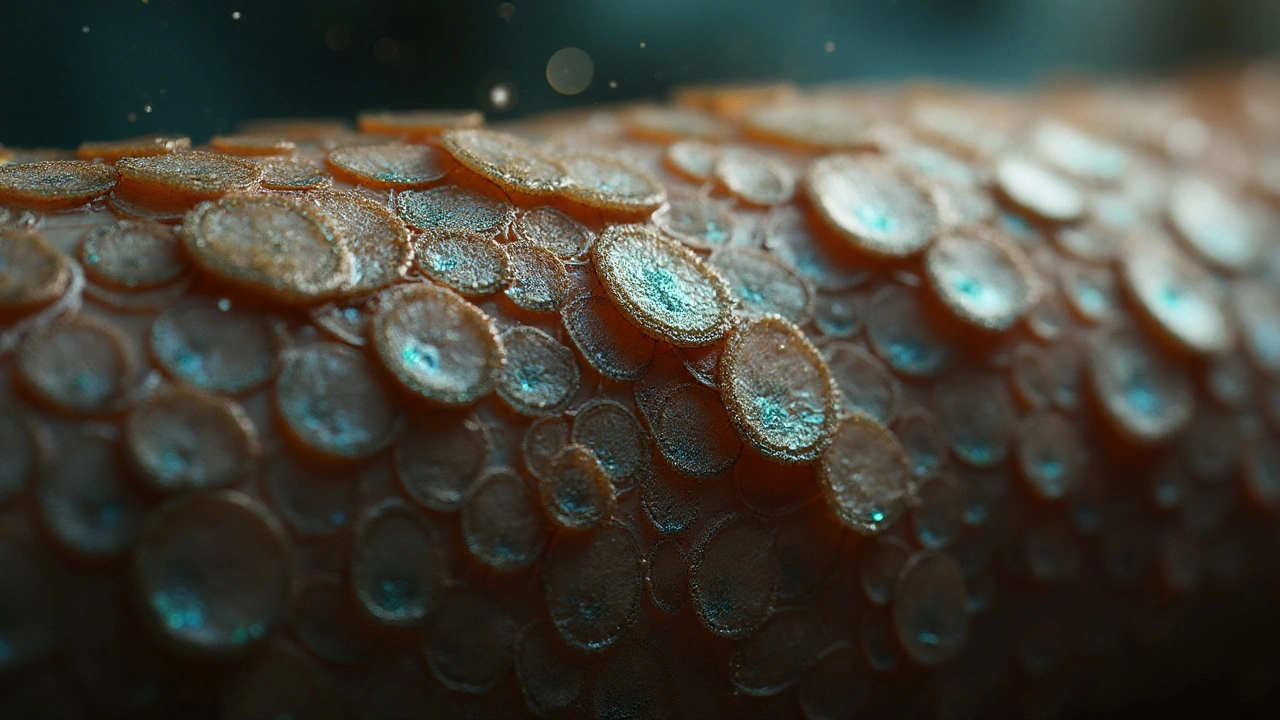Ichthyosis: What It Is and How to Keep Your Skin Smooth
If you’ve ever noticed patches of extra‑dry, scaly skin that look a bit like fish scales, you might be dealing with ichthyosis. It’s a group of inherited skin disorders that make the outer layer of skin thicken and shed improperly. Most people think it’s rare, but there are several mild forms that show up in childhood and can be managed with the right routine.
Common Types and Symptoms
There are many types, but the two you’ll hear about most are ichthyosis vulgaris and X‑linked ichthyosis. Ichthyosis vulgaris is the most common and usually appears after birth, often getting worse in winter. X‑linked ichthyosis mostly affects males and shows up early with larger, darker scales on the trunk.
Typical signs include:
- Fine, white flakes on the arms, legs, or torso.
- Thick, plate‑like scales that may crack.
- Itchy or tight feeling, especially after a hot shower.
- Occasional redness or inflammation where the skin cracks.
While the condition isn’t dangerous, the skin can become uncomfortable and look unsightly, which is why many look for practical ways to soften it.
Managing Ichthyosis at Home
The good news is that most cases respond well to daily skin‑care habits. Here’s a straight‑forward plan:
- Moisturize right after bathing. Use a thick ointment or cream that contains ceramides, petrolatum, or urea. Apply while the skin is still damp to lock in water.
- Gentle exfoliation. Once or twice a week, use a loofah or a soft scrub with alpha‑hydroxy acids (AHA) to remove the dead layer. Don’t scrub hard; you’ll just irritate the skin.
- Limit hot showers. Hot water strips natural oils and makes scaling worse. Aim for warm water and keep showers under 10 minutes.
- Humidify your home. Dry indoor air aggravates ichthyosis. A small humidifier can add moisture and reduce flare‑ups.
- Watch your diet. Staying hydrated and eating foods rich in omega‑3 fatty acids (like salmon or walnuts) helps skin retain moisture.
If over‑the‑counter creams aren’t enough, a dermatologist can prescribe stronger options such as topical retinoids, alpha‑hydroxy acids, or oral retinoids for severe cases. These medications thin the outer skin layer and promote normal shedding, but they need regular monitoring because of possible side effects.
When to see a doctor? If you notice cracks that bleed, persistent itching despite moisturizers, or if the scaling spreads quickly, it’s time for a professional look. Early treatment can prevent infection and keep the skin smoother.
Living with ichthyosis doesn’t have to be a constant battle. By keeping a simple daily routine, using the right moisturizers, and getting medical help when needed, you can keep your skin comfortable and look confident. Remember, the skin’s barrier can be repaired – it just takes a bit of patience and the right products.

How Genetics Drive Scaly Skin Overgrowths (Ichthyosis)
Explore how genetic mutations shape scaly skin overgrowths, the inheritance patterns behind ichthyosis, and emerging diagnostic and treatment options.




